Thistle Community
I usually have at least one thistle that makes it to a good size. In 2015 this monster grew and grew in my north garden, near the tiger lilies and other less attractive things. It branched a lot, probably because of the number of Entylia carinata treehoppers. By the end of the season, this plant had produced many many seeds before the carinatas killed it. A while before this huge plant died, the treehoppers were moving away, and I expect to find them on other thistles this year. (There are 3 or 4 young thistles now in spring of 2016.) Notice the attendant ants, in a similar relationship to the one between redbud and its treehoppers. In the last picture, taken in August, 2019, the ant seems to be caressing the nymph with its mouthparts, and the nymph responds by emitting a sphere of the "honeydew" that ants are so fond of.

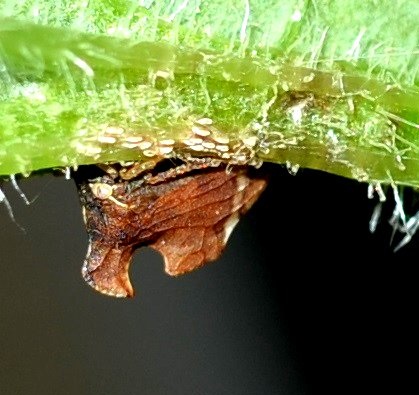
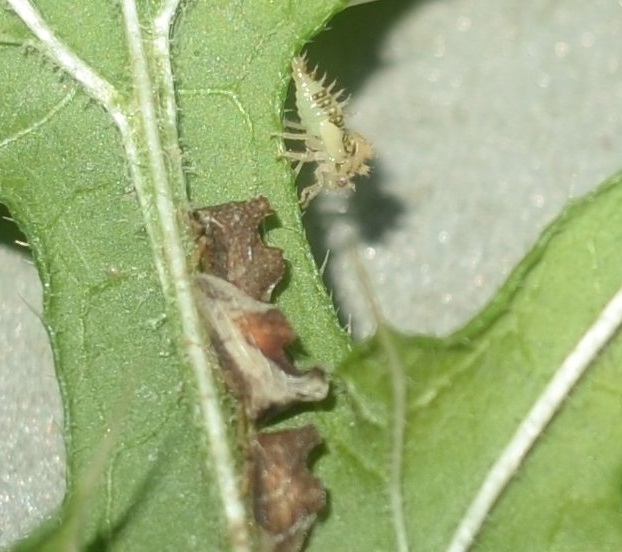
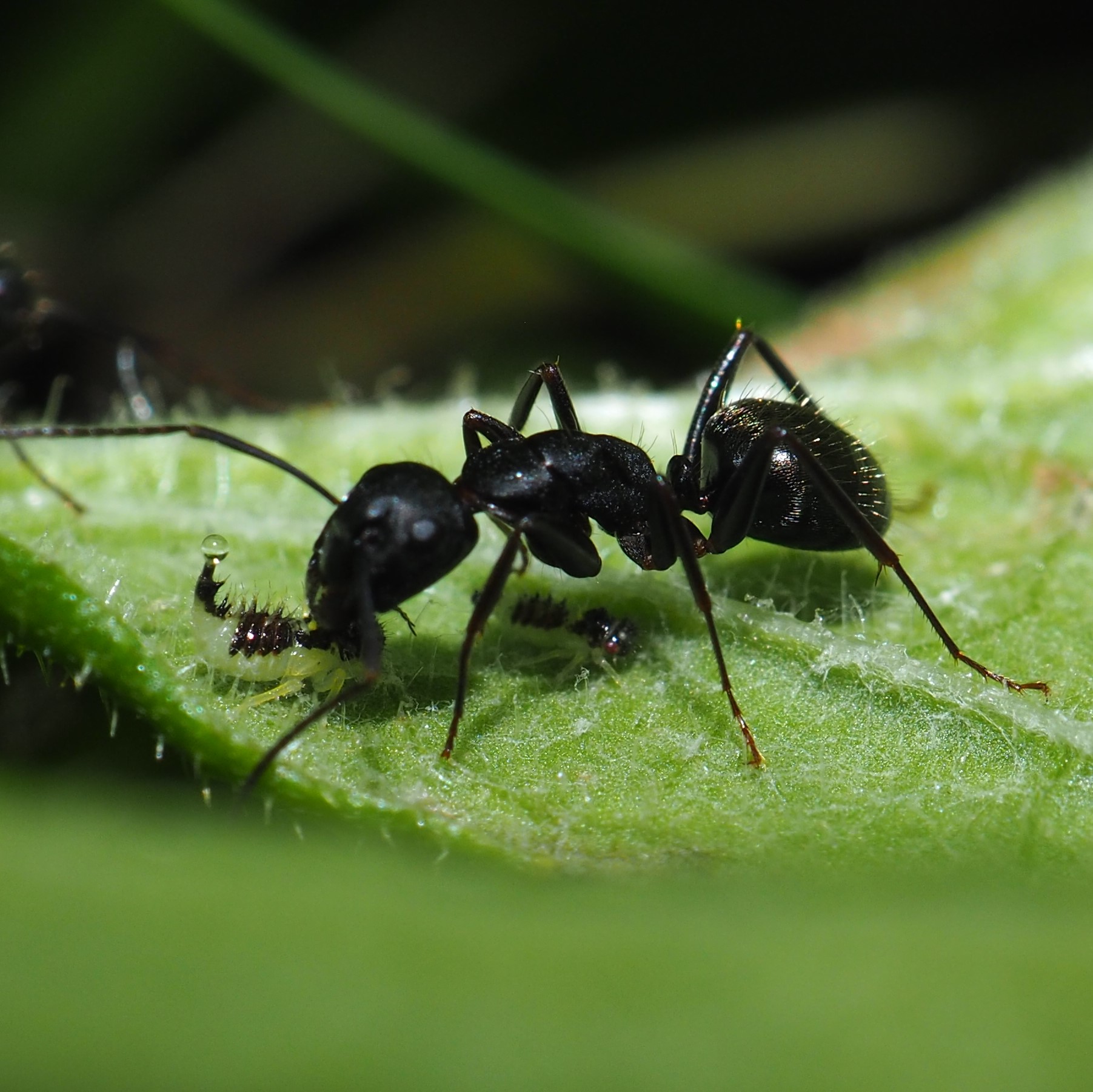
Many other insects frequented the giant thistle. This Fork-tailed Bush Katydid nymph (picture taken in July 2015) fed on it - it disappeared until later in the summer. For reference, here is one on a zinnia plant. You can see the face, which looks as if it has just lathered up for a shave. The last is an adult female (look at her scimitar-like ovipositor!), found a few weeks later on a vine adjacent to the thistle.
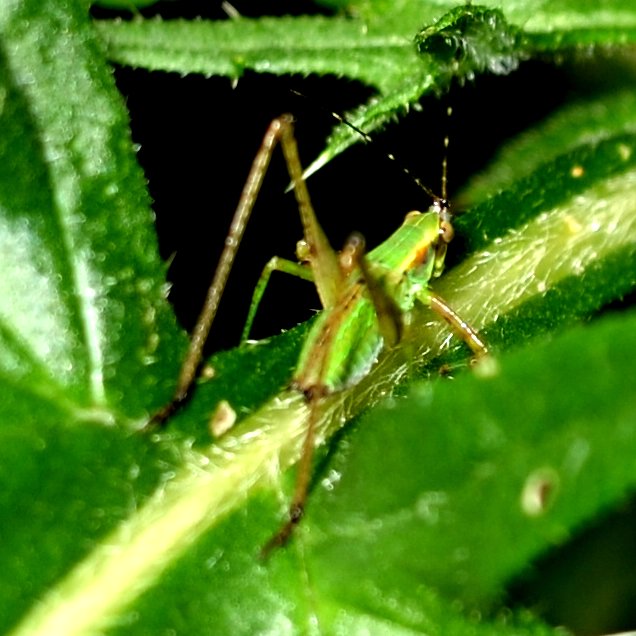
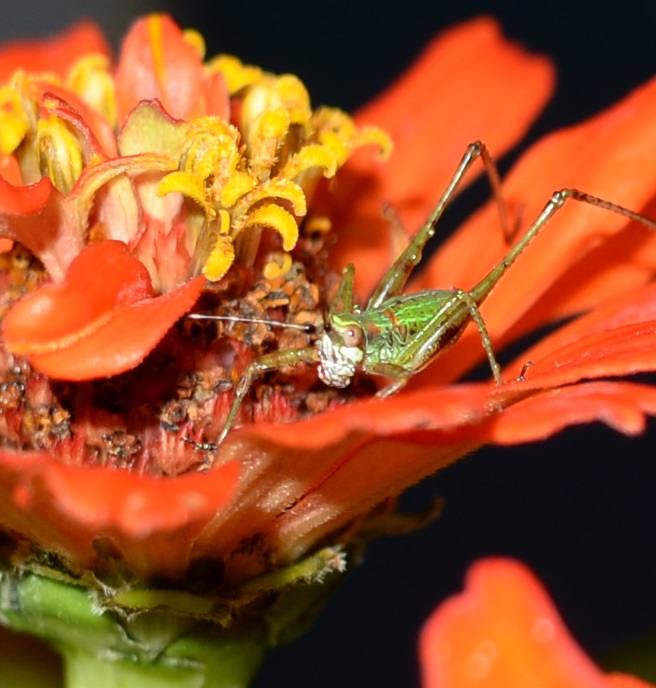
 adult female 8 14 15 3.jpg)
Bees also love the thistle flowers. Here is a female green sweat bee in 2014. This next is just one of my favorite images - the bee with the hairy eyeball. Last is a mason bee, a super pollinator. They collect pollen on their underbellies, not their legs. Too bad they don't make hives with honey!

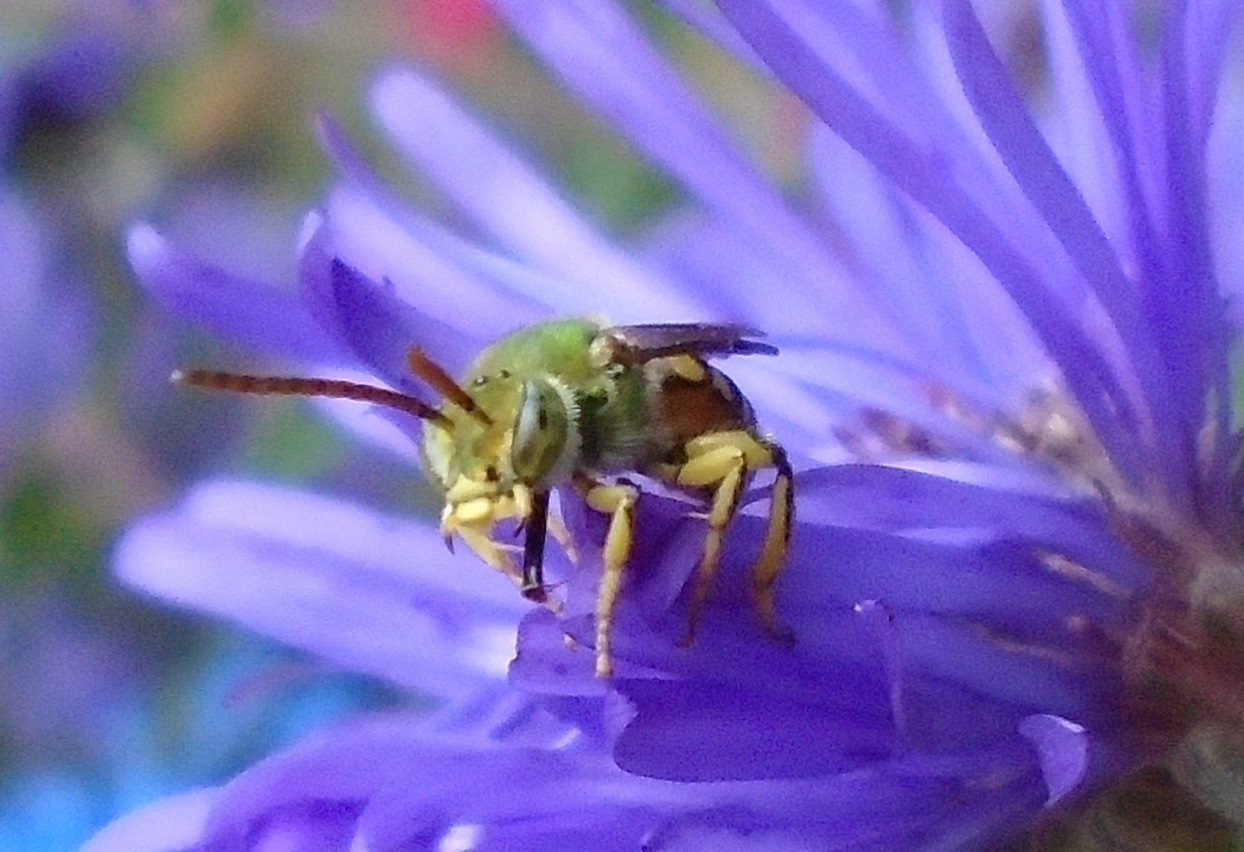
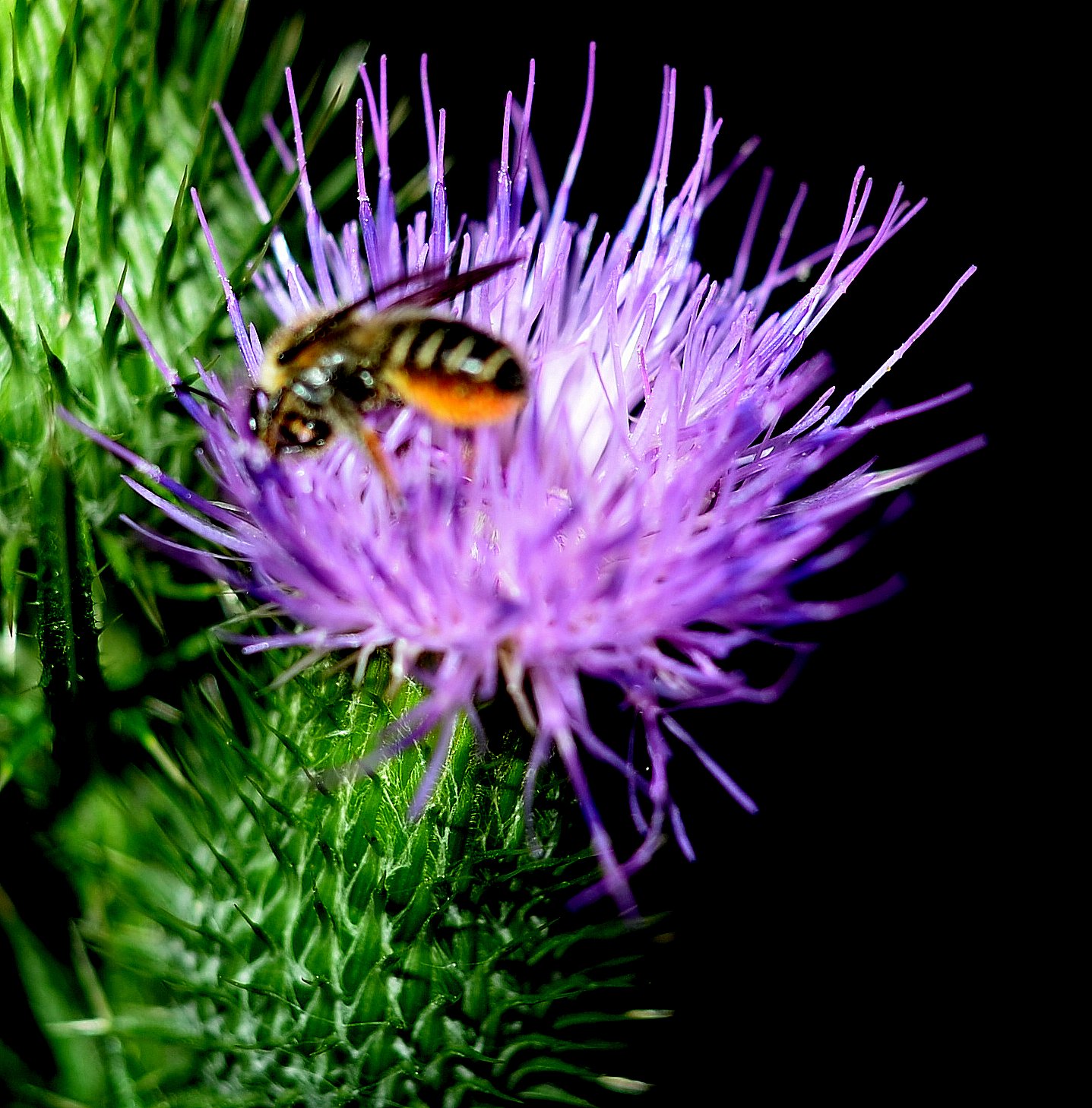
Networking!
http://mokennon.albion.edu/backyardblog.htm
Copyright Martha O'Kennon 2019










 adult female 8 14 15 3.jpg)


